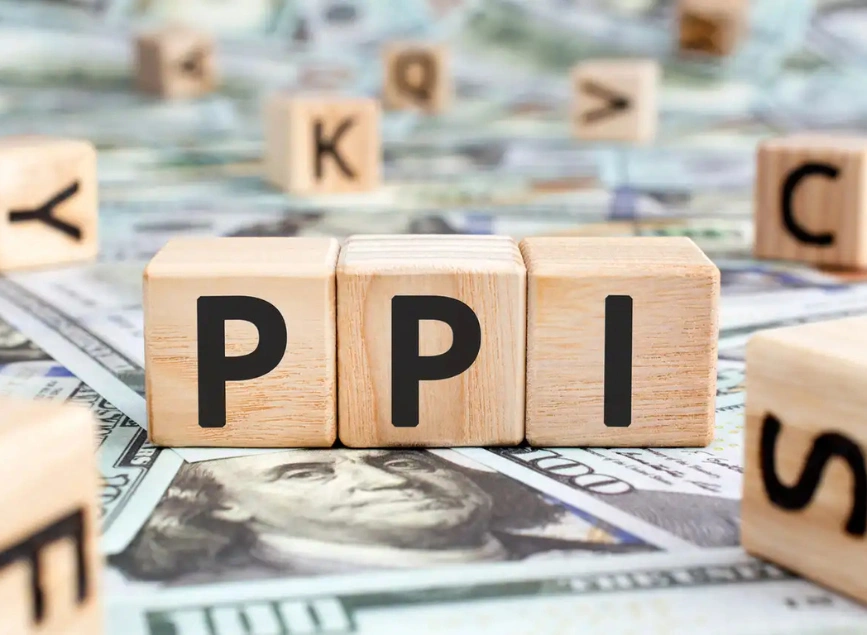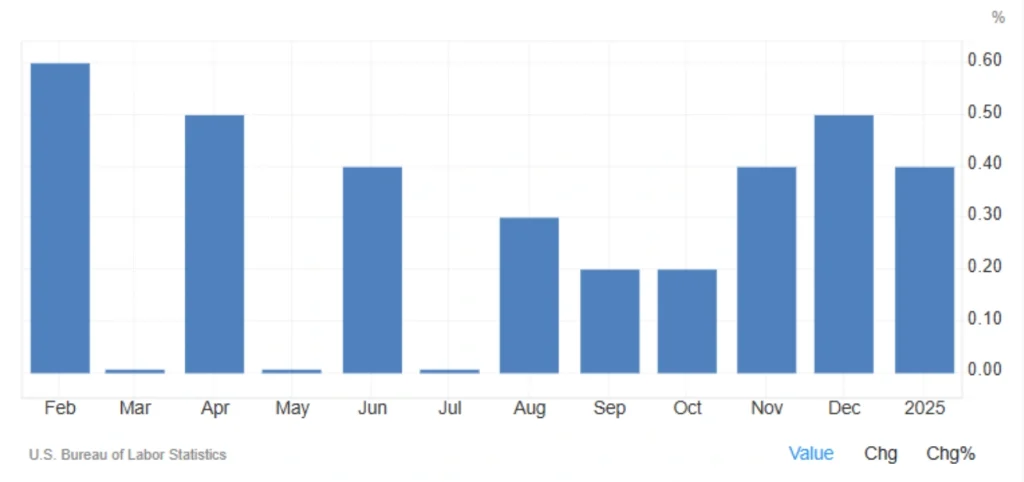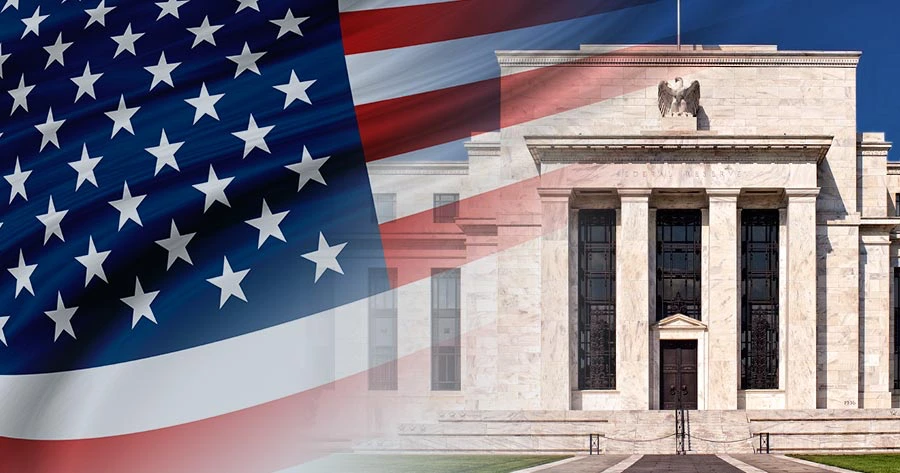
U.S. Producer Prices Rise in January 2025: What It Means?
Inflation remains a key focus for investors and policymakers, and the latest Producer Price Index (PPI) report suggests that cost pressures are still present in the economy. In January 2025, U.S. producer prices rose by 0.4%, a slight slowdown from December’s 0.5% increase but still above market expectations of 0.3%. This signals that inflationary pressures in the supply chain remain strong—potentially influencing Federal Reserve decisions in the months ahead.
PPI Report: Key Takeaways
Producer Prices Increased More Than Expected
- Overall PPI: Up 0.4% in January, exceeding market forecasts of 0.3%
- Final demand services: Increased 0.3%
- Goods prices: Rose 0.6%, reflecting higher input costs for producers
- Annual PPI inflation: Held steady at 3.5%, matching December’s revised figure and beating the 3.2% forecast
These figures indicate that while producer inflation has moderated slightly, cost pressures remain higher than expected, which could have broader implications for monetary policy.
How Will the Federal Reserve React?
The Federal Reserve has been signaling potential interest rate cuts in 2025, but persistent inflation could complicate those plans. Here’s why the latest PPI report matters:
1. Higher Producer Prices Signal Continued Inflationary Pressures
The fact that PPI exceeded expectations suggests that businesses are still facing elevated costs, which may eventually be passed on to consumers. This could slow progress in reducing inflation, making the Fed more cautious about cutting rates too soon.
2. Stable Annual Inflation Could Delay Rate Cuts
With PPI inflation steady at 3.5%, it’s clear that the rapid disinflation many hoped for isn’t materializing as quickly. The Fed may now wait longer before easing monetary policy, as reducing rates too soon could risk reaccelerating inflation.
3. Financial Markets May Respond with Volatility
Higher-than-expected inflation data could impact bond yields, stock markets, and currency values. If traders believe the Fed will delay rate cuts, we could see:
- Higher bond yields, as expectations for lower interest rates fade
- Stock market fluctuations, as investors adjust their outlook
- Strengthening of the U.S. dollar, as higher rates attract global capital

PPI vs. CPI: Why Producer Prices Matter
What Is the Producer Price Index (PPI)?
The PPI measures price changes at the producer level, tracking what businesses pay for raw materials and wholesale goods. It’s a leading indicator of consumer inflation since higher producer costs can eventually be passed on to consumers.
How Is PPI Different from CPI?
- PPI reflects business costs before goods reach consumers.
- CPI (Consumer Price Index) tracks retail prices that consumers pay.
- Rising PPI can indicate that CPI will also increase, influencing inflation expectations and Federal Reserve policy.
What’s Next for Inflation and Interest Rates?
Will Producer Prices Keep Rising?
With PPI inflation steady at 3.5%, it’s clear that cost pressures remain sticky. If these trends continue, the Fed may have to rethink its timeline for rate cuts, potentially keeping borrowing costs higher for longer.
What to Watch Next
Investors and policymakers will closely monitor upcoming CPI reports, labor market data, and economic indicators to assess whether inflationary pressures are truly easing—or if we’re in for a longer battle against rising costs.
Bottom Line
The higher-than-expected PPI report reinforces concerns about inflation persistence, which could delay the Fed’s rate-cut plans. Markets will now be watching upcoming data releases closely to determine whether inflation remains a long-term challenge or if it’s finally cooling down.
Share
Hot topics

Federal Reserve’s Challenges to Trump’s New Policies
As the Federal Reserve Open Market Committee (FOMC) prepares for its upcoming meeting, all eyes are on how the Fed will respond to Donald Trump’s latest economic policies. With the...
Read more




Submit comment
Your email address will not be published. Required fields are marked *